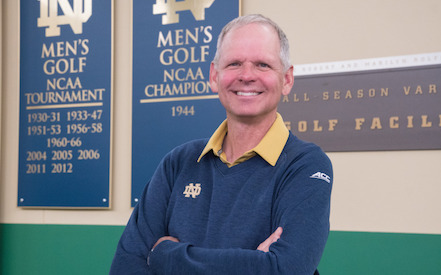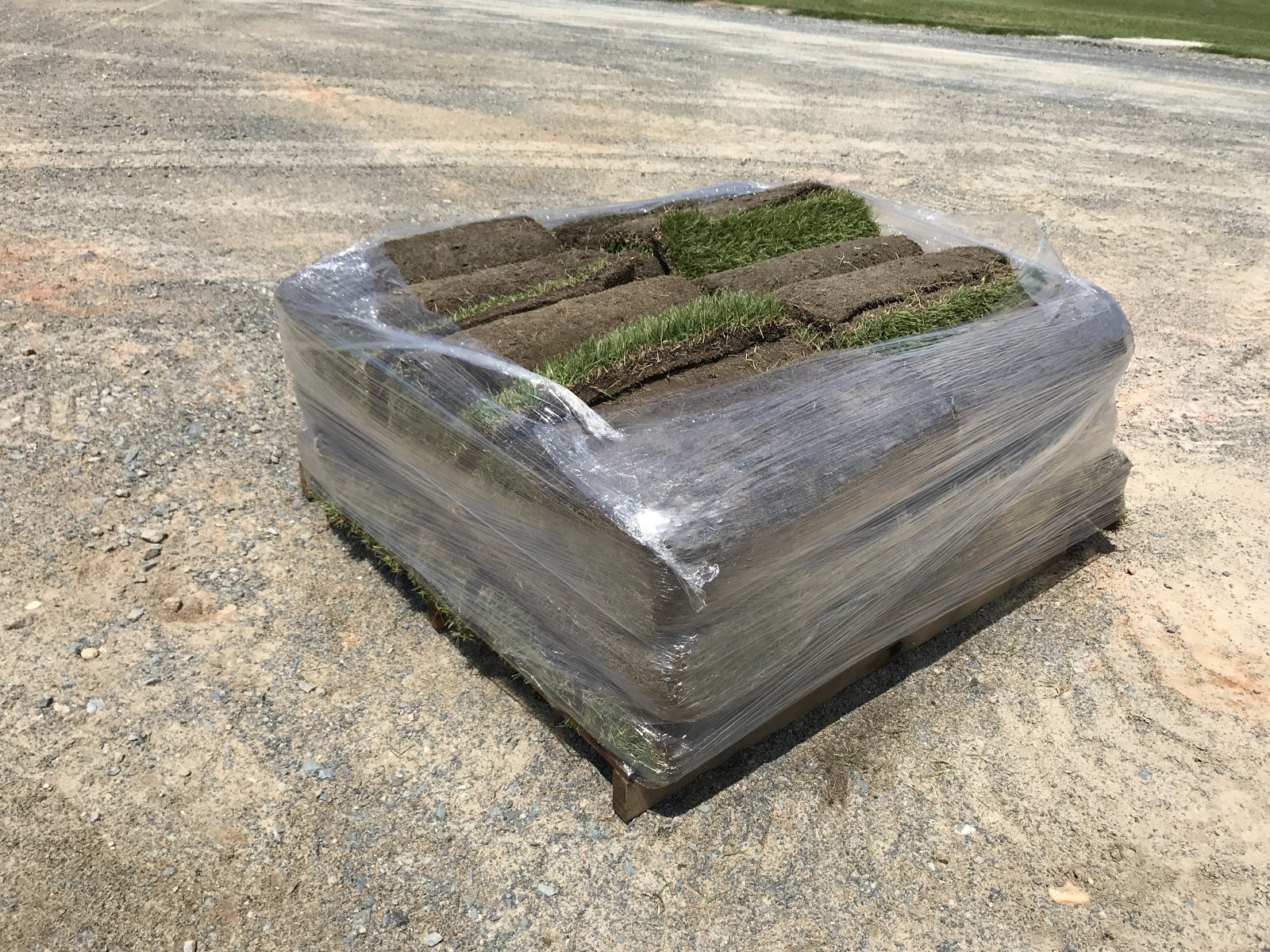
SECRET WEAPON: Notre Dame Golf Team Proves Practice on Live Grass Indoors Leads to Wins
Scott Gump remembers the day he realized something had to change. Gump, a former PGA Tour Player who now serves as interim head golf coach for the men’s golf team at the University of Notre Dame, was in sunny Los Angeles coaching the team during a golf tournament. As he watched, one of the team’s players miss-hit a wedge and flew his shot six yards over the back of the green. Gump knew he couldn’t be disappointed in the player. It was the dead of winter back on campus in Indiana and the team had been practicing indoors for months. While other student athletes in warmer climes had been hitting wedge shots off of real grass outdoors, his players had no choice but to scoop shots off of mats indoors.
“Hitting off of mats, you don’t want to hit down,” Gump says. Doing so is not just impractical, it could cause injury because you can’t take a divot off of a mat. “You have to change your technique slightly. It’s fun to hit off mats, but it’s a different type of shot. If at home we haven’t been able to practice a wedge shot,” Gump thought, “the university’s players were at a disadvantage.”
But Gump had an idea. He had to find a way to bring live grass indoors for the university’s players to practice on. What if they could ship in live sod from a sod farm, build a platform to hold it in place in the indoor practice facility, and give the team the opportunity to practice their wedges all winter long? When he explained to the Athletic Department that creating a budget to buy and ship live sod to the indoor practice range would not only help improve player’s scores but avoid injury because the “sod and dirt give a cushioning to the blow,” they signed on, too. The idea, Gump says, “ticked all the boxes.”
The next step was to find a source for live sod in the middle of winter. Local sod farms could be buried under feet of snow, so Gump knew the team had to find a farm in a warmer climate. They reached out to Marc Marsh at Turf Connections in Cheraw, South Carolina, who grows quality zoysiagrass sod, known for its thickness and durability.
“After some discussion we decided durable was the goal,” Marsh says. “With the dense rhizomes, stolons and thick blade canopy, Cavalier Zoysia was a hands down choice over bermudagrass. The team wanted something that would hold up indoors for student practice. Mature Cavalier is a natural, excellent tee and chipping practice surface,” Marsh says.

The first shipment of sod was sent to Notre Dame in January of 2015. Marsh cut the sod extra thick with a minimum ¾-inches of soil for additional cushioning, and, at the request of the team, packed the sod rolls into boxes to be shipped via UPS. The first shipment made it just fine, but two weeks later, the UPS delivery was delayed and the sod dried out. Marsh suggested he stack the 6-foot-long rolls of sod on pallets, (up to 1,000 lbs. at t time) cut thick, shipped moist to keep the turf alive, and shrink wrapped for transport on a truck. It worked. For the next two years, every two weeks Turf Connections shipped a pallet of Cavalier Zoysia sod rolls from South Carolina to the Irish training facility in Indiana, during the months of January, February and March when it’s too cold or snowy to practice outside.
The turf is harvested while dormant, meaning it is a brownish off-color and not actively growing, but is still durable enough to withstand the punishment the team gives it. Each roll of sod must hold up to 10 players hitting 10 to 13 shots in succession as they compete against one another in drills for distance and accuracy. The goal is to destroy the turf, Gump says, while hitting wedge shots and taking big divots safely.
Gump says the team appreciates having real grass to practice on, and that the players eagerly anticipate each new shipment of zoysiagrass from Turf Connections.
As an interim head coach, Gump says the goal is to be innovative and offer the players every advantage. Practicing on real grass, he says, has made a difference in the team’s performance.
“I do know that we’ve had a couple of guys with tender wrists who have mentioned it. They feel better about their game because they’ve gotten the short game work in. It’s all a factor to me. You’re always trying to find a way to give them the best opportunity. There’s not one answer. It’s everything they’ve done. But the grass, it absolutely helps,” Gump says.
The results speak for themselves. After practicing on live sod in January, the Notre Dame Men’s Golf Team won their first tournament of the year against Ball State.
Image Credit: Photo of Scott Gump originally appears on University of Notre Dame’s Golf Blog.
Copyright 2025 Turf Connections | Privacy Policy